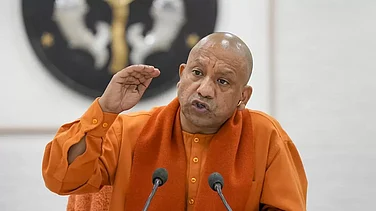Samay Singh, a mustard seed grower in Gudawali village, is busy harvesting but is worried that he may not get a better price for his produce this year as the wholesale rate in mandi here has already crashed below the minimum support price (MSP) of Rs 5,450 per quintal. Last year, Singh had harvested three quintals of mustard seed in his half acre land and sold at an average rate of Rs 7,000 per quintal. This year, yield is higher as there was no pest infestation and he expects production of at least four quintals but fears he may not get even MSP this time.
Advertisement
Harikishan Sharma, a farmer from Dheeg block, is shocked at the mustard prices which began falling from October 2022 onwards, much before the harvesting and somewhere feels the cheaper palmolien imports is the culprit. In the last three months, mustard prices have fallen from Rs 8,000 per quintal to Rs 5,200 per quintal in Bharatpur mandis, the hub for mustard production and processors, according to these farmers.
Farmers in this district have only two options now to sell their produce. One is in mandis and the other one to millers or processors. There was a third option i.e. commodity derivatives market, but extension of ban on mustard derivatives till December this year has left them with no choice. However, the first two options are not free from difficulties as at every step of the transaction farmers are exploited and cheated and at the end get less price for the produce, says Devraj Fouzadar, CEO of Dheeg Wheat and Mustard Producers Company.
Advertisement
Narrating his recent experience, Fouzadar said farmers take the produce with great difficulty to the mandis. In April 2021 at the peak of the harvesting season, an aggregated stock of mustard was taken to a mandi and given to the lab for testing the oil content based on which the price is determined.
Oil content in mustard seed is around 42 per cent in this area, but the lab report showed as low as 37-38 per cent and accordingly the price we got was less, he told PTI. Even millers and processors were no less as they manipulated the weighing scale and made less payment to the farmers. About 3 per cent difference in 100 kg of mustard is a loss to the farmers, he added. "Fed up with the mandi and processors experience, we were looking at different avenues to sell our produce," Fouzadar said and added he learnt about the commodity derivatives market in one of the workshops during the Covid-19 pandemic in 2020 when carrying the produce to physical mandis had become difficult. "We tried our hands in 'put option' hedging about 1,000 quintal mustard at a specified rate of Rs 5,050 per quintal on NCDEX. In April 2021, we saw the actual rates in the market were ruling at Rs 6,500 per quintal. So, we did not exercise the put option and decided to hedge in futures but by then the ban was imposed," he said.
Just before the ban on mustard derivatives in December 2021, mustard prices had touched as high as Rs 8,300 per quintal, but the price fell immediately after the ban. Fouzadar said he had to sell the produce at Rs 7,600 per quintal in the mandi before prices fell further. Ramchandra Choudhary, a farmer and retired officer in a cooperative bank, said a little exposure that farmers had with mustard derivatives through the Dheeg Wheat and Mustard Producers Company helped them get the daily mandi rates on their mobile phones and were aware of the daily price trend. Farmers have now got this awareness that they should not sell the produce at one go and should wait for price to improve. They are also convinced of hassle-free trading on the derivatives market where assaying and testing of the grain is done scientifically. Even the price farmers get is at least Rs 250-300 per quintal higher than the mandi rate.
Advertisement
Roop Singh, CEO of Uthan Mustard Producers Company in Astawan village, said he waited till end of December 2022 to take advantage of the derivatives market. "Hoping the ban will be lifted after December 2022, we purchased from farmers about 412 quintals of mustard at Rs 7,000 per quintal. But the ban was extended for another one year and we were forced to sell in the range of Rs 6,041-6650 per quintal. Our FPO faced a cumulative loss of Rs 3 lakh," he said. Now in the absence of derivatives trade in mustard, Singh is left with no option but to sell at mandi or to millers/processors this time.Farmers in Bharatpur are heavily dependent on mustard crop for their livelihood as this is the only cash crop grown during the rabi season. Farmers cannot take any major crops in the kharif season due to poor soil quality, lack of rains and hard ground water. The same situation prevails in other districts like Alwar, Dholpur, Dausa and Sawai Madhopur district of Rajasthan.
Advertisement
Expressing concern over fall in mustard prices, edible oil industry body SEA has demanded the government to commence procurement and restrict imports of refined palm oil as part of steps to arrest the price drop. The country's total mustard production is estimated to be record at 12.81 million tonnes in the 2022-23 crop year (July-June) as per the second estimate of the agriculture ministry. Rajasthan, Madhya Pradesh and Uttar Pradesh contribute 75 per cent of the country's total mustard production.















 Just one email a week
Just one email a week